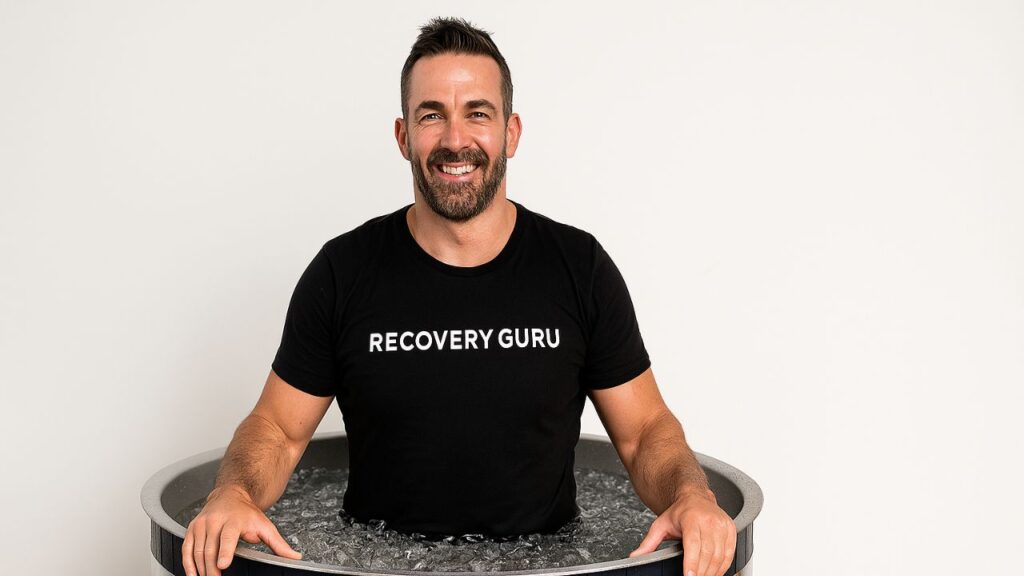Red Light Therapy for Muscle Pain Treatment: How It Works
We include links to products we think are useful for our readers. If you click and buy a product through one of the affiliate links on this page, we may earn a small commission.

Since the beginning of 2024, red light therapy (RLT) has been all the rage, especially among people looking for effective ways to manage muscle pain. Seeing so much buzz around it, I decided to try RLT for myself to understand its benefits firsthand.
I often struggle with muscle aches resulting from long hours at my desk and occasional intense workouts. RLT came as a recommendation from a friend who swore by its pain-relieving capabilities. Intrigued and hopeful, I got a home-use RLT device designed to target specific areas of the body. For me, it was primarily for my lower back and neck.
The treatment involves exposing the sore or inflamed muscle areas to a low level of red light. This non-invasive therapy claims to stimulate healing at the cellular level, helping tissues to repair and inflammation to subside. As someone who prefers to steer clear of pain medication whenever possible, I found RLT to be an attractive alternative.
I used the device consistently over several weeks, and to my relief, I noticed a significant reduction in my discomfort. Encouraged by these results, this article aims to explore how red light therapy works to combat muscle pain, reflecting on the science behind its growing popularity.
Key Takeaways
Effectiveness of Red Light Therapy: Red light therapy can significantly alleviate muscle pain by enhancing blood circulation and stimulating cellular repair.
Safety and Home Use: Red light therapy is safe for most individuals and accessible for home use with various devices.
Recommended Frequency: Optimal results are often achieved with regular sessions, typically a few times a week.
Duration of Sessions: Each session usually lasts between 10 to 20 minutes, making it a convenient option for pain management.
Immediate Results: Some users may notice reduced pain and stiffness after just a few sessions, although individual results can vary.
How Red Light Therapy Works Against Muscle Pain
Red light therapy (RLT) might seem like a modern marvel, but its effectiveness against muscle pain is rooted in well-established scientific principles. When you use RLT, you’re essentially exposing your body to a specific wavelength of red light, typically between 600 to 1000 nanometers. This light penetrates through the skin to a depth of about 5 to 10 millimeters, reaching your muscles, nerves, and even bones.
The key to RLT’s effectiveness lies in its ability to stimulate mitochondrial activity—the powerhouses within your cells. When red light photons are absorbed by the body, they increase the production of adenosine triphosphate (ATP), the energy currency of the cell. This boost in ATP production enhances cellular metabolism, encouraging cells to repair themselves more efficiently. Additionally, RLT helps reduce oxidative stress and increase circulation, both of which are crucial for reducing inflammation and promoting muscle recovery.
From my own experience, after incorporating RLT into my routine frequently, I did notice a noticeable difference in my pain levels. The areas of persistent soreness that used to linger after physical activities began to diminish, making my daily tasks more manageable and comfortable. This personal improvement further solidified my confidence in the potential of red light therapy as a powerful tool for muscle pain management.
Clinical Survey About Red Light Therapy Treatment for Muscle Pain in 2024
Recently, a quarterly study conducted by Novaalab this year surveyed 205 participants who opted for RLT as a method to manage their muscle pain. The findings are quite telling—approximately 32% of the respondents turned to RLT, reflecting a growing trend towards seeking alternative, non-pharmaceutical treatments for pain relief. This shift is indicative of a broader movement towards wellness therapies that don’t rely on medication and aim for minimal side effects.
Of those who used RLT, an impressive 72.6% reported satisfaction with the outcomes they experienced within just a month of treatment. This high rate of satisfaction underscores the therapy’s potential as an effective intervention for muscle pain. Additionally, 59% of them didn’t take any other treatments such as over-the-counter pain relievers, ice packs, or warm compress bags.
Participants noted improvements not only in pain reduction but also in enhanced mobility and overall quality of life. Such positive feedback is significant, as it suggests that red light therapy can provide a reliable and efficient solution for those suffering from chronic or acute muscle discomfort.
Best Red Light Therapy Products for Muscle Pain Treatment
I’ve explored several red light therapy devices recently to find the best options for muscle pain treatment. These products offer an effective, non-invasive way to address muscle soreness, using specific light wavelengths to promote cellular healing and reduce inflammation.
Here, I’ll highlight some top picks that stand out for their features and user feedback, aiming to help you choose the right one for your needs.
Novaa Light Pad by Novaalab
I’ve had the opportunity to use the Novaa Light Pad from Novaalab, and I can share that it’s been quite effective in dealing with muscle and joint pain. The device uses a combination of red and infrared light to penetrate deep into tissues, which helps in reducing inflammation and pain, particularly in areas like the lower back and knees where muscle pain is common.
The Novaa Light Pad is equipped with 360 light chips that emit red light at 660 nm and infrared light at 850 nm. This combination not only aids in reducing inflammation but also promotes cell regeneration and pain relief. The design of the pad is user-friendly with an adjustable velcro strap that makes it easy to attach to different body parts, ensuring targeted therapy where it’s needed most.
From my personal experience, after using the pad regularly, I noticed a significant reduction in the pain levels in my knee, which has been troublesome for a while. The pad’s light penetrates deep into the joint and muscle tissue, providing a soothing effect.
Moreover, the pad is lightweight and portable, making it convenient to use at home or even on the go. It automatically shuts off after 20 minutes, which is a helpful feature to prevent overuse.
Block Blue Light PRO Red Light Panel
World-leading red light panel. Portable yet with a wide range of coverage. Efficiently alleviates muscle pain and discomfort.
Here’s another product I tried: the Block Blue Light PRO Red Light Panel. This device is designed for effective at-home light therapy, providing a substantial coverage area that’s ideal for treating muscle and joint pain. The panel emits red light at wavelengths optimized for deep tissue penetration, which aids in reducing inflammation and accelerating recovery.
Its portable design allows for easy use across different settings, ensuring you can receive treatment wherever it’s most convenient. The effectiveness of the panel in alleviating discomfort and enhancing muscle recovery is notable, making it a valuable tool for pain management.
Infraredi Pro Max Red Light Therapy Panel
All-around red light therapist at your hands. Includes numerous tech features. Effectively boosts muscle recovery.
This Infraredi Pro Max Red Light Therapy Panel offers a range of red and infrared light, ideal for therapeutic use right at home. It’s designed with Multiwave Technology, combining different light spectrums to enhance wellness benefits comprehensively. The panel includes 6 Watt Dual Lens LEDs that provide focused and potent light therapy sessions, allowing for customizable treatments with Pulsing+ and Dimming+ Modes.
I appreciated the flexibility of selecting either Red or NIR light to target specific areas, which is perfect for addressing muscle and joint discomfort. This product offers a significant level of customization to cater to various health and wellness needs, ensuring effective treatment outcomes.
Frequently Asked Questions
RLT is a treatment that uses specific wavelengths of red light to help reduce muscle pain and inflammation.
It increases blood circulation and stimulates cellular repair, which helps relieve pain and heal muscles faster.
While RLT can significantly reduce pain, it’s not a cure but a treatment that needs to be used consistently for best results.
Conclusion
Red light therapy offers a promising avenue for those seeking relief from muscle pain without the drawbacks of traditional pain management methods. As we’ve explored, the red light therapy’s ability to penetrate deep into tissues and stimulate cellular repair and circulation can significantly reduce discomfort and speed up recovery.
But why settle for temporary relief when you can potentially enhance your body’s own healing processes? The simplicity of use and the growing body of supportive research make RLT not just an alternative but a potentially integral part of managing chronic pain.




